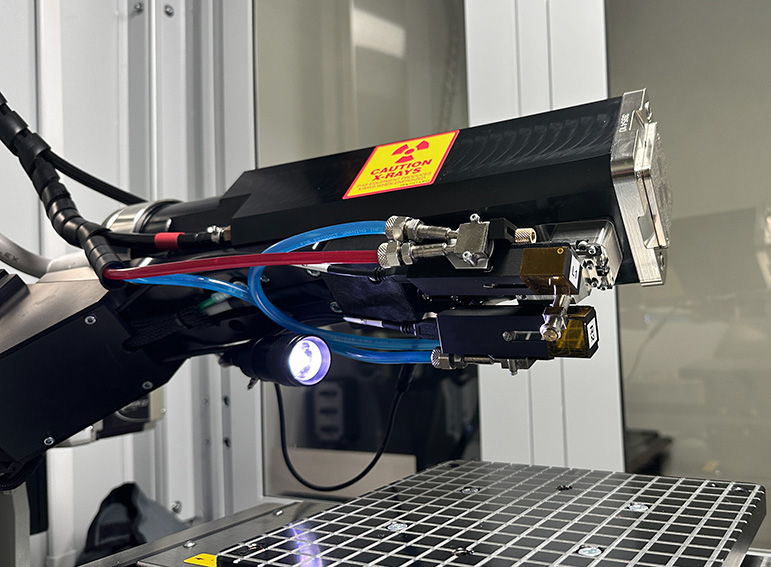the most advanced x-ray detectors on the market
The LXRD can be equipped with best-in-class 2D detectors for the ultimate residual stress measurements.
Features:
- 2D solid-state silicon detectors
- Exceptional quantum efficiency
- True photon-counting technology to capture every particle
- Faster data collection and processing
- Extremely low noise
EASY and CONVENIENT TO USE
All of our LXRDs have features that make them easy and convenient to use. The high-performance goniometers maintain ASTM E915 accuracy in low-maintenance designs. The manual focusing pointer enables accurate positioning of the goniometer in complex geometries, while the automated focusing pointer allows convenient focusing of large residual stress maps. A wide variety of x-ray beam apertures are available, including round 0.2, 0.5, 1.0, 2.0, 3.0, and 4.0 mm options and rectangular 0.5x3, 1x3, 0.5x5, 1x5, and 2x5 mm options. High stress standards, zero stress powders, and RA standards ensure accurate results. Integrated cooling makes for self-contained instruments.

High-performance goniometer Bearing

Reference standards

Integrated x- ray tube cooling systems

electropolisher
ADVANCED FEATURES
Residual stress mapping is available on all LXRD models, providing a comprehensive picture of the residual stress state of your part. As the originators of residual stress mapping, Proto is a leader in the field. Automated retained austenite (as per ASTM E915) enables characterization of % RA in steels as low as 1%. X-ray elastic constant (XEC) determination ensures automated residual stress measurement material calibration as per ASTM E1426. Pole figures created using the LXRD rotary stages can be used for preferred orientation analysis, single-crystal orientation, and single-crystal stress measurement.

mapping stages

Automated retained austenite measurement

Pole figure

XEC determination via
4-point bend



































